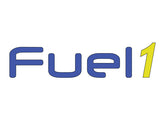Injector Technology
Technology
Technical: Seven factors that dictate reconditioning your fuel injectors.
1. Restrictions
A restriction of only 5% to 10% in a single fuel injector can lean out the fuel mixture and cause a misfire. Direct fuel injectors are even more sensitive to restrictions because of the precise amount of fuel they inject into the combustion chamber.
2. Turbo Troubles
In turbocharged engines, dirty injectors can have a dangerous leaning effect that may lead to engine-damaging detonation. The leaning out may cause higher than normal exhaust temperatures and turbo failure.
3. Heat Soak
When the engine is shut off, the injectors undergo heat soak. Fuel residue evaporates in the injector nozzles, leaving the waxy olefins behind. After cooling and new startup heat bakes the olefins into hard varnish deposits. Over time, these deposits can build up and clog the injectors. On four-cylinder engines, the No. 2 and No. 3 injectors are in the hottest location and tend to clog up faster than the end injectors. The same applies to the injectors in the middle cylinders in six- and eight-cylinder engines.
4. Increase or Decrease in Long- and Short-Term Fuel Trims
The fuel calibration curves in the Powertrain Control Module (PCM) are based on OEM dyno testing using a new engine. The PCM’s built-in adaptive fuel control strategies allow it to adjust both short-term and long-term fuel trim to compensate for variances in fuel pressure and fuel delivery to maintain the correct air/fuel ratio — but only within certain limits.
The PCM may not be able to increase injector duration enough to offset the difference if:
• An injector becomes clogged with fuel varnish deposits and fails to deliver its normal dose of fuel when it’s energized, or
• Fuel pressure to the injector drops below specifications because of a weak fuel pump, plugged fuel filter or leaky fuel pressure regulator.
This can leave the air/fuel mixture too lean, causing the cylinder to misfire.
5. Not Enough Resistance
The solenoid at the top of the injector creates a magnetic field that pulls up the injector pintle when the injector is energized. The magnetic field must be strong enough to overcome the spring pressure and fuel pressure above the pintle, otherwise the injector may not open all the way. Typically, the solenoids often short internally when injectors fail, which causes a drop in resistance. If the specification calls for 3 ohms, for example, and an injector measures only 1 ohm, it will pull more current than the other injectors. Too much current flow to an injector may cause the PCM injector driver circuit to shut down, killing any other injectors that also share that same driver circuit.
6. Longer Crank Times
An injector leak will cause the rail to lose pressure while the vehicle is sitting resulting in a longer than normal crank because the rail will need extra time to pressurize. The fuel rail pressure threshold for cranking occurs around 5,000 psi. Normal common-rail systems will operate at 5,000 psi at idle and can reach up to 30,000 psi at wide open throttle.
7. Lack of Maintenance
If an owner has neglected maintenance services like oil changes and filter replacements, chances are the fuel injectors will suffer. For port fuel applications, not changing the oil can result in blowby and a compromised PCV system, which builds up contaminates on the tip of the injector.


















